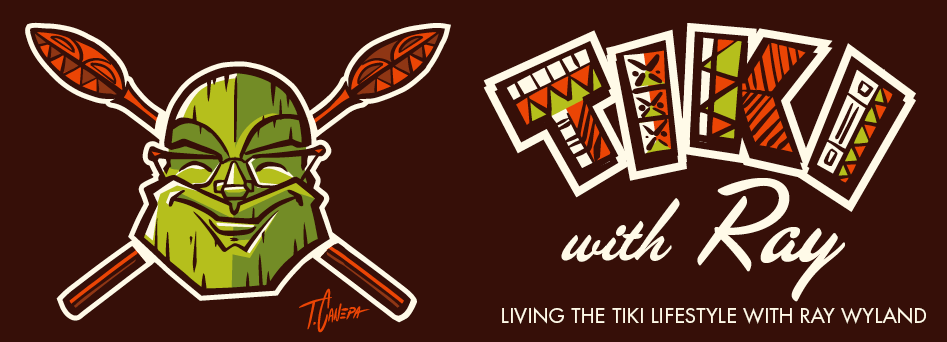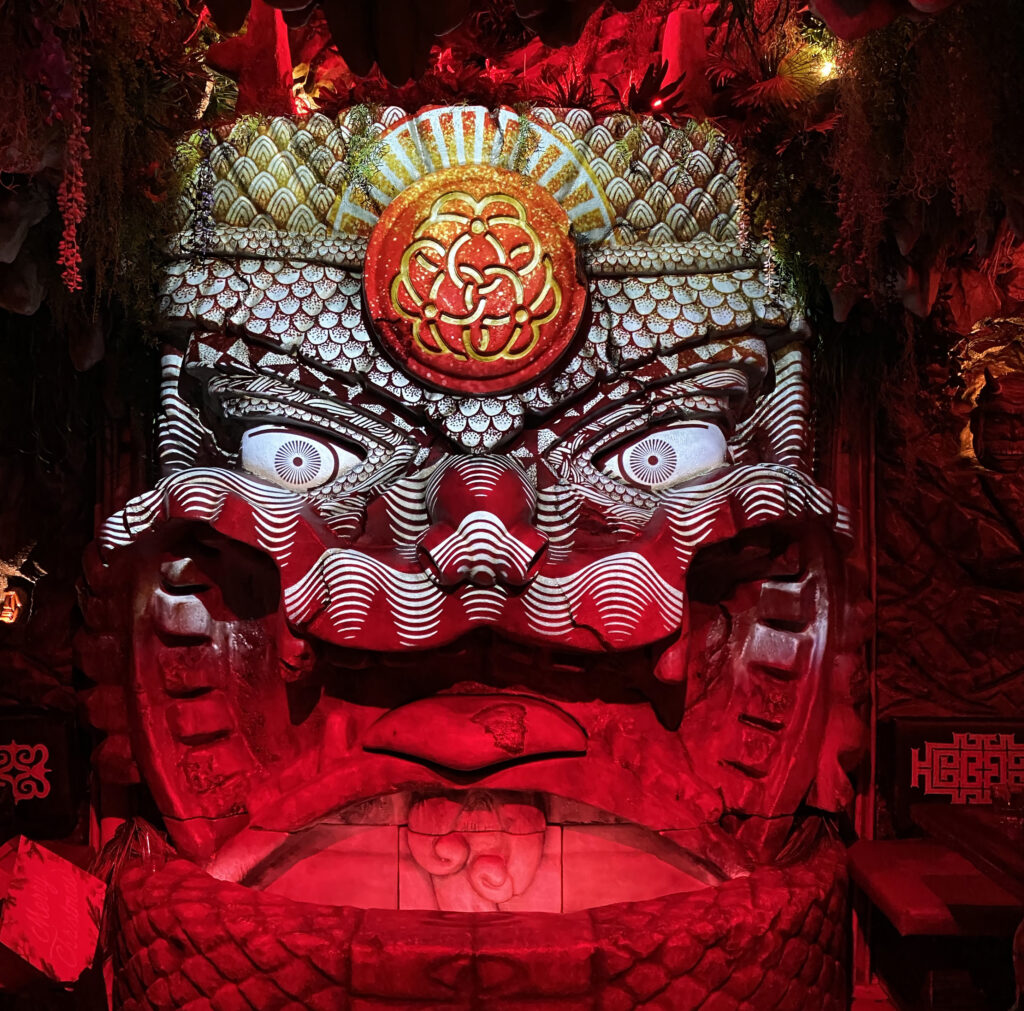
Tiki Tatsu-Ya, Austin’s new restaurant and bar, puts a Japanese twist on the tiki bar. But it is much more than that. Imagine the immersive bar re-imagined as theme park attraction where story and decor synchronize to complete the ideal immersive bar experience.
The Story
You are exploring a cave on an unnamed South Pacific island. Polynesian artifacts line the cave. But the cave has also been home to 17th Century Japanese explorers, and later to early 20th Century Japanese rum exporters.
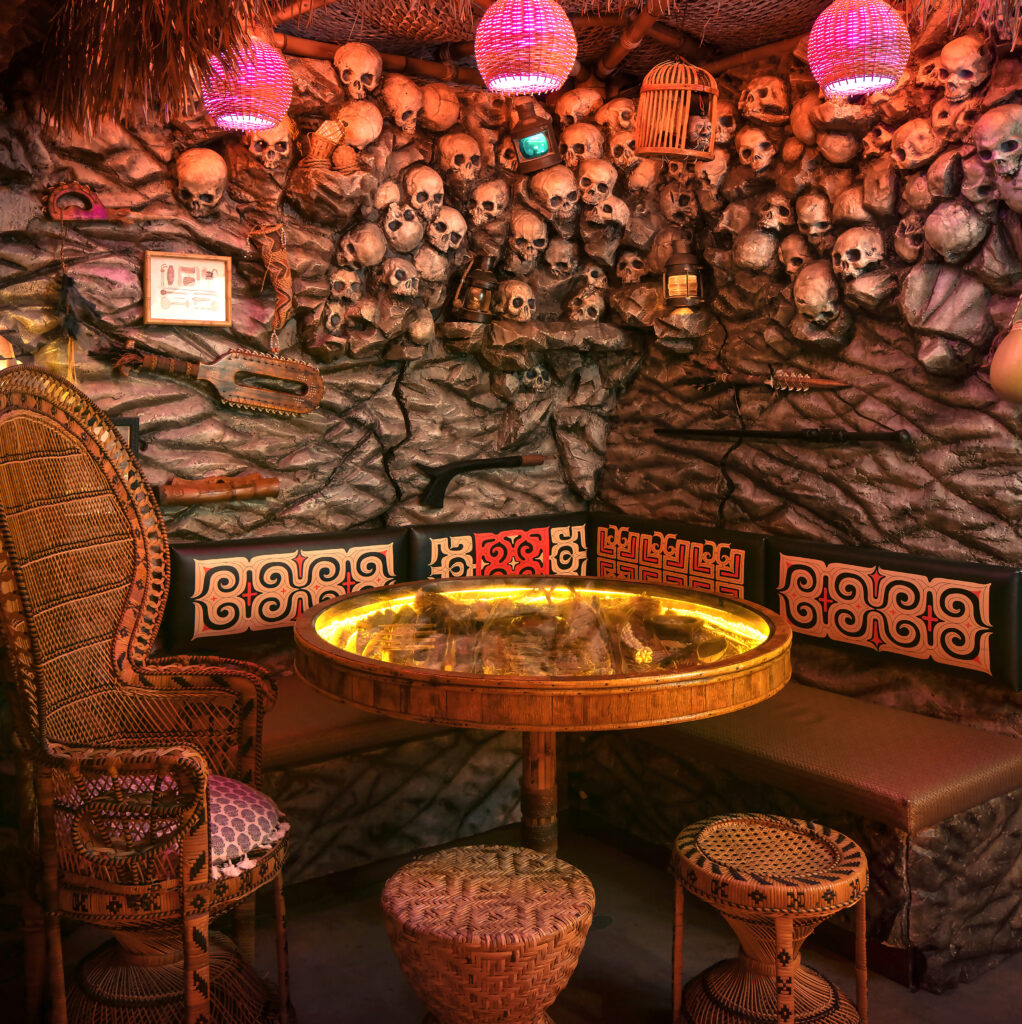
Skulls of deceased explorers and island inhabitants line the far corner.
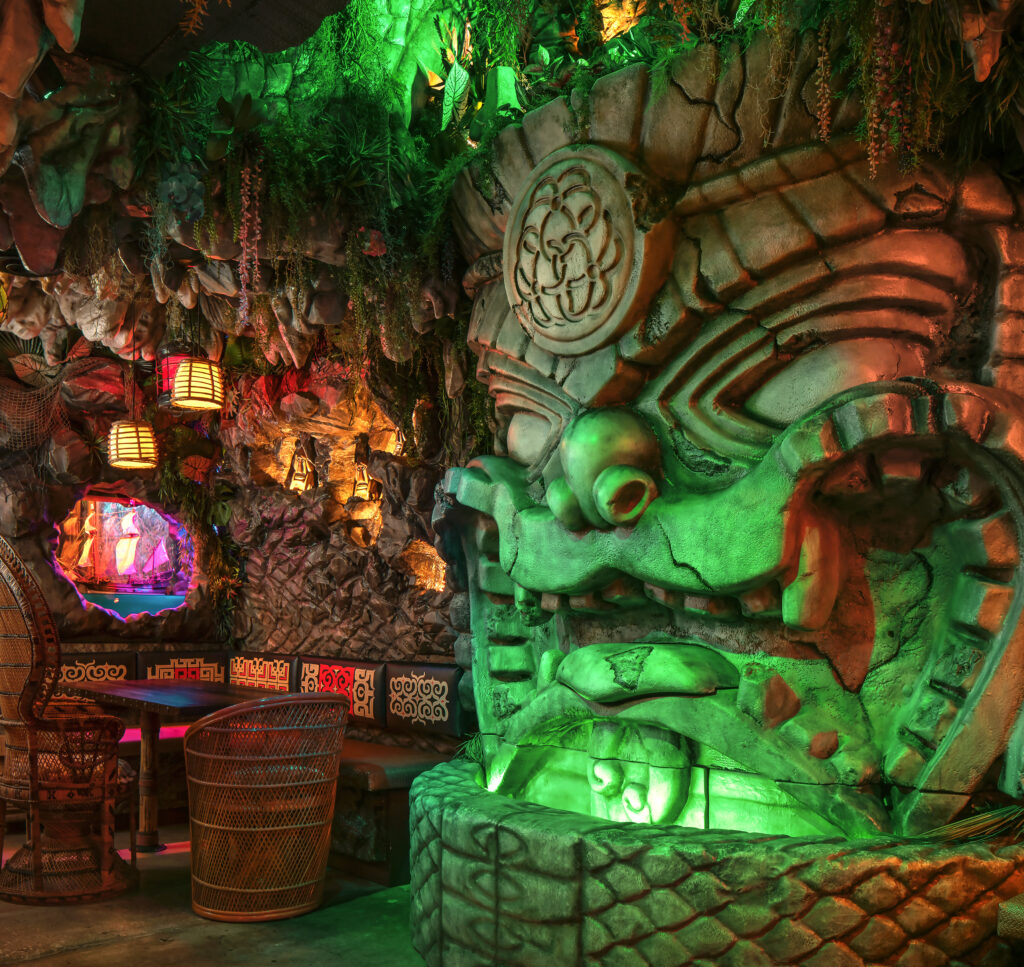
A large carving of a “shisa” — a mythological Okinawan dog/lion guarding against attacking dragon sea spirits — is brilliantly lit with projection-mapped designs, and it serves as a fountain flowing from an alcove on the floor above.
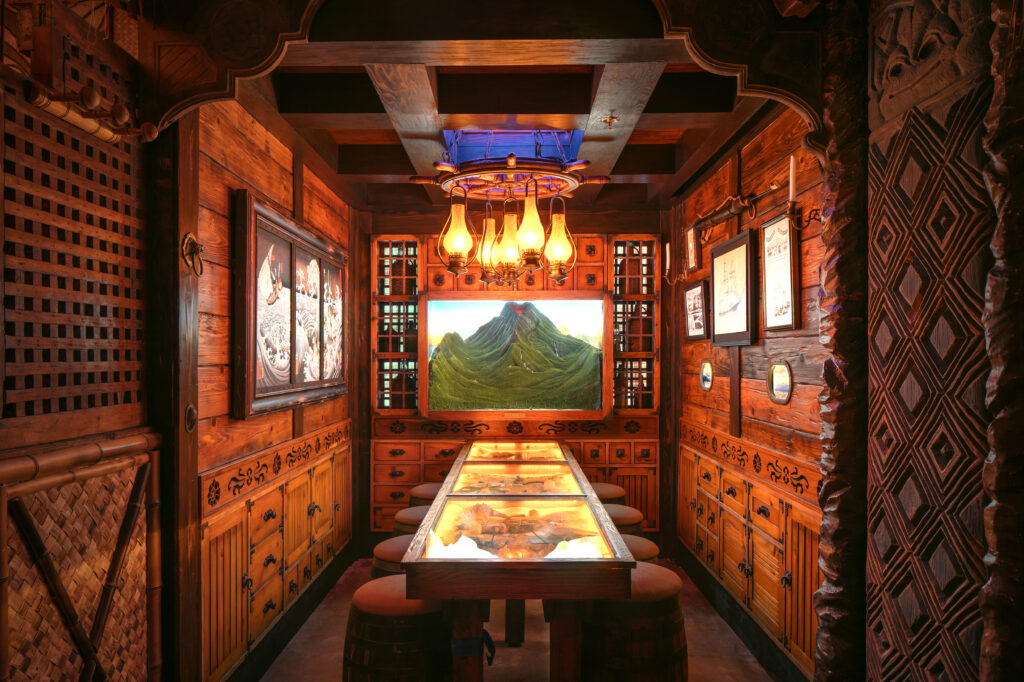
A booth becomes the vantage point from a 17th Century Japanese trading ship to view this unnamed volcanic island. And the lower bar itself has been elegantly carved, including tiki carvings on the back bar containing some unique characters.
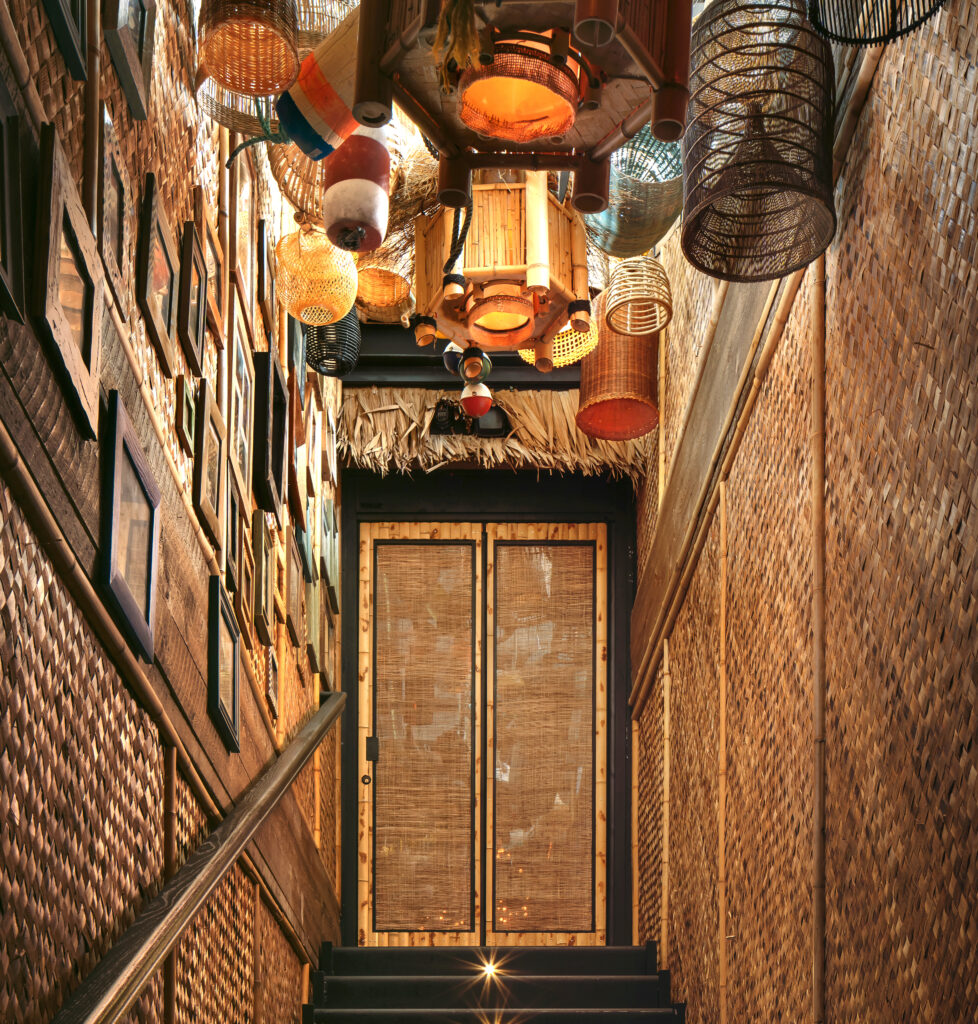
But Tiki Tatsu-Ya is really two bars in one. You go upstairs under hanging fishing crates and traps to the “Nest Bar,” which exists in the unnamed fantasy island of today — an island that has become a post-war surf/vacation paradise. This second floor Nest Bar is less exotic than the cave bar below, but no less filled with impressive detail.
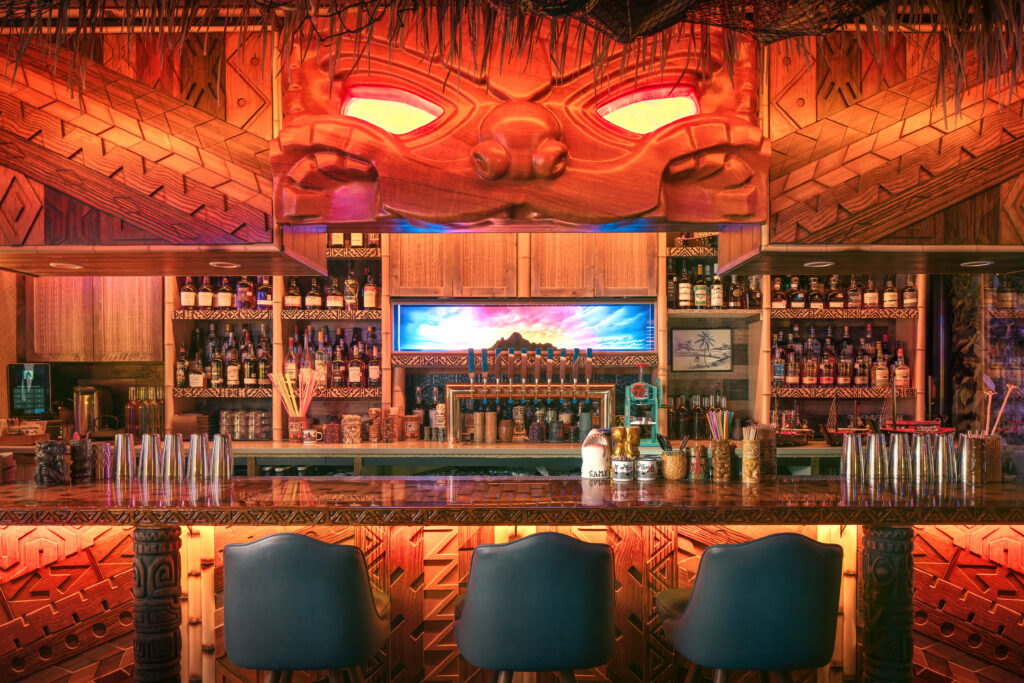
The upstairs bar itself is framed by a carved shisa over the bar stools. It sits Chesire- cat-like over those drinking at the bar.
Fittingly, the Nest Bar also contains an abstract sea dragon carving — also lit with projection mapped lighting — in an alcove that serves as the top of the fountain pouring into the shisa statute in the cave bar below.
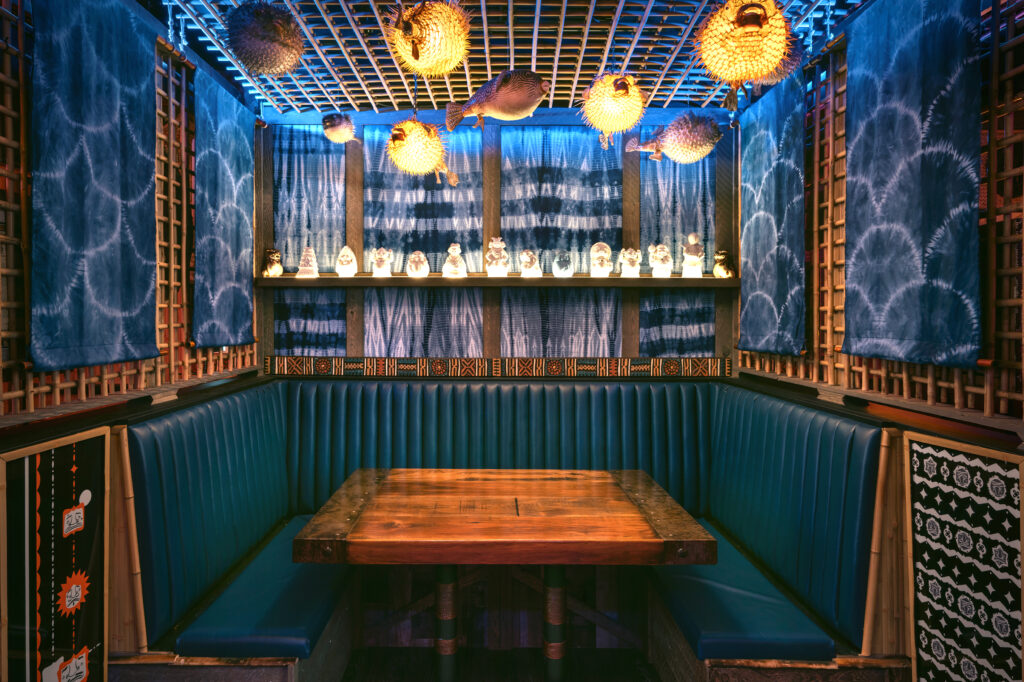
A large, classic tryptic pays tribute to the women pearl divers of Japan (“ama”). The upstairs booth is lined with Japanese blue tie-dye cloth (“shibori”). Over this booth hang eight pufferfish (“fugu,” as any Simpsons fan will tell you).
And, in modern tiki bar style, the shadowbox windows evoke the island at twilight. These windows come alive when certain drinks are brought out — complete with thunderous show.
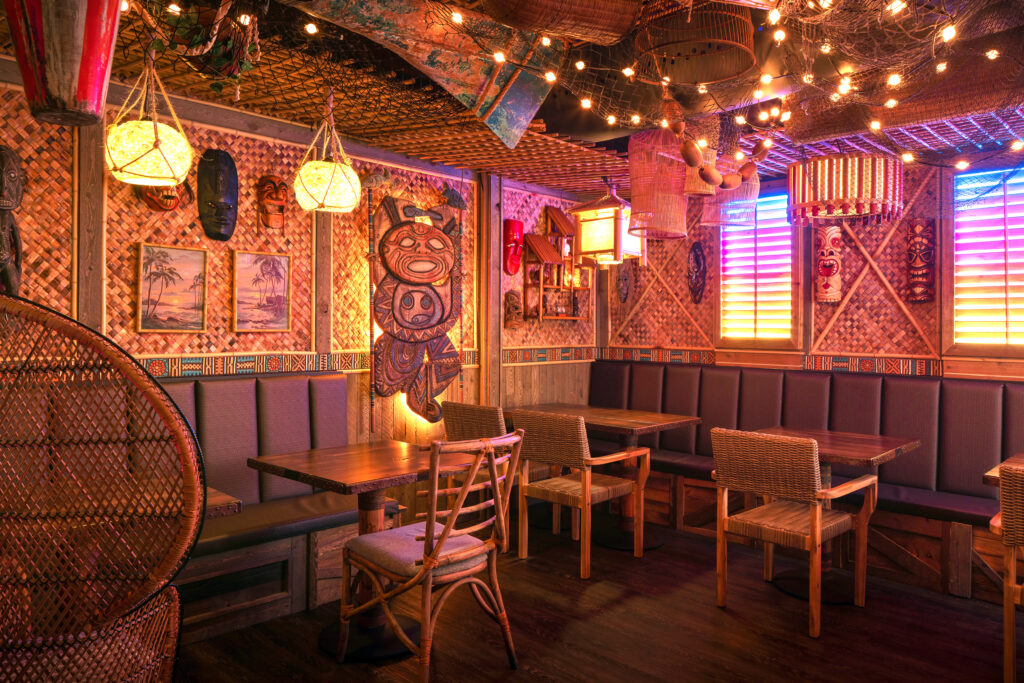
The unnamed island’s extensive story is recounted by a voice that sounds like Sam Elliott, and the story is piped into Tiki Tatsu-Ya’s bathrooms. But you can hear the entire story in your own bathroom here.
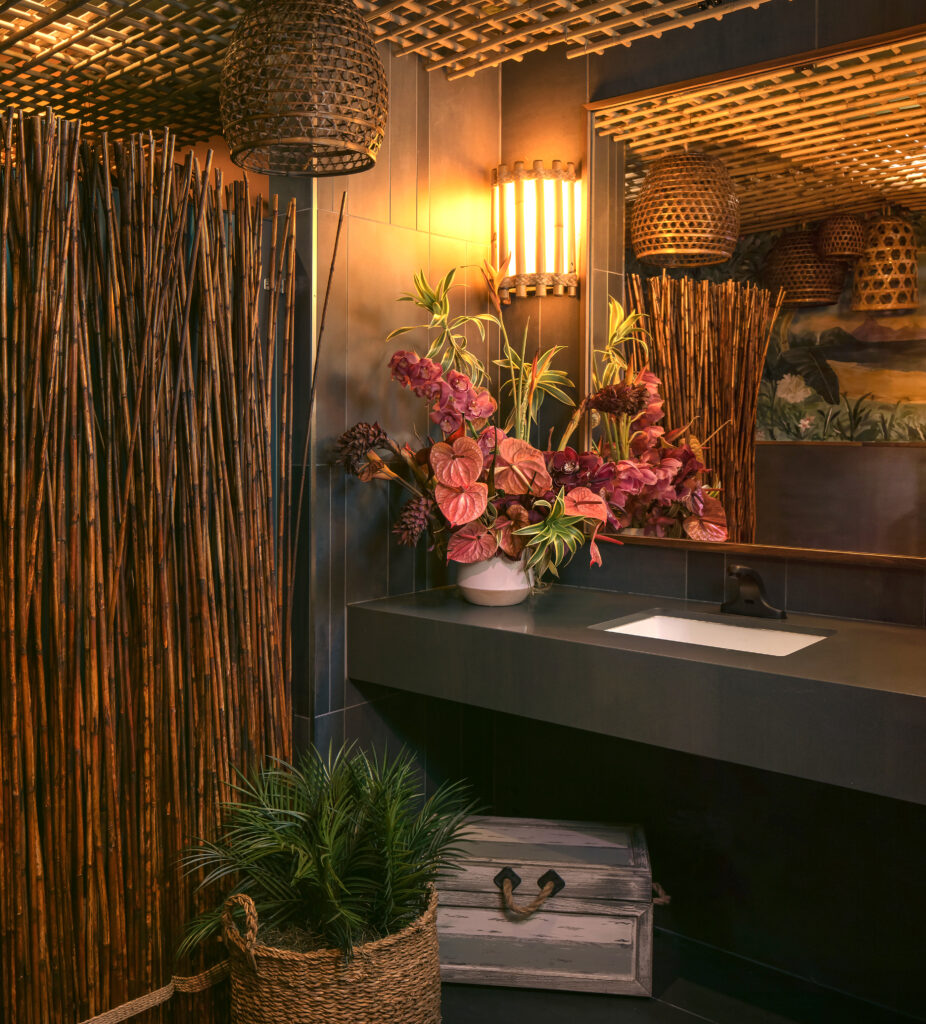
Sure, the story is somewhat contrived, but every detail in the entire bar fits within the story! In fact, this commitment to a bit is carried out on the main street behind Tiki Tatsu-Ya’s entrance where you can find the faded facade of a former faux travel agency to book dream vacations to the mysterious island.
The Backstory
Tiki Tatsu-Ya is the brainchild of brothers and business partners Tatsu and Shion Aikawa. Tatsu founded the popular Tatsu-Ya branded ramen and Japanese-influenced restaurants in central/southern Texas.
Operating partner Shion was eager for the Tatsu-Ya group to explore opening a tiki bar. “Living in Los Angeles, I remember the temporary respite that I found at places like Tiki Ti during a challenging period of life,” said Shion in a company press release.
Tatsu, the chef and owner, was convinced. The Tatsu-Ya company has spent years planning for Tiki Tatsu-Ya. (I remember my excitement thinking about a Tatsu-Ya created bar during my prior visit to Austin three years ago.) The cave bar shows how the creators did their homework by including a nook with items from classic tiki bars.
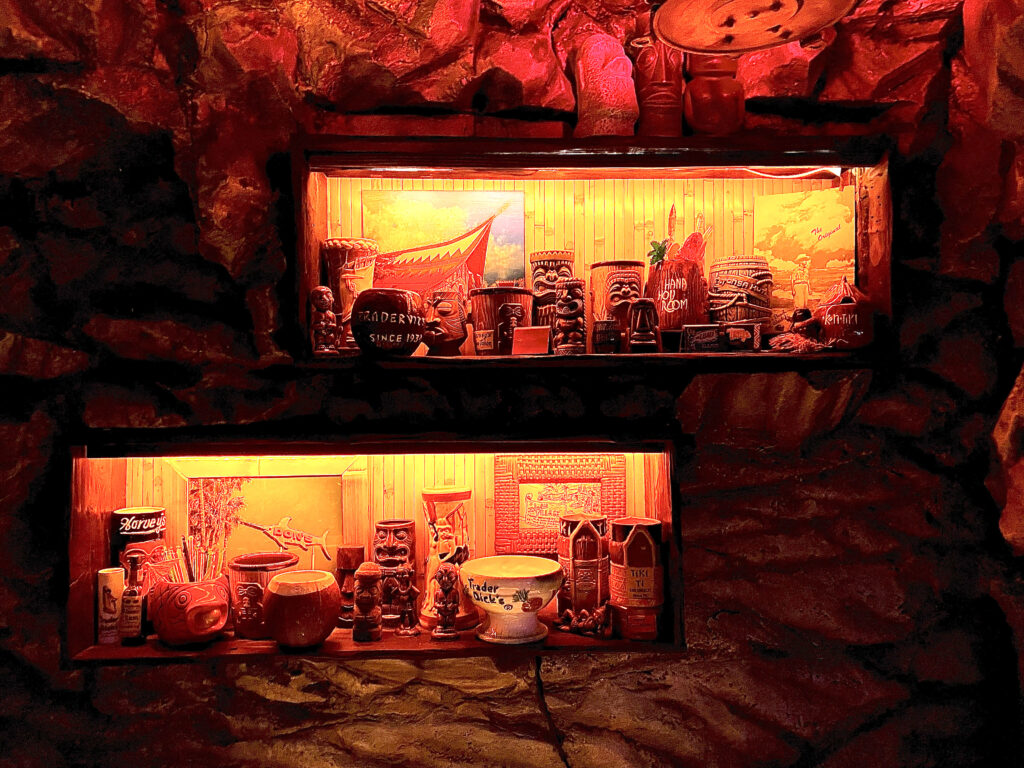
The fusion of Japanese with tiki came during the long planning process. “Through our travels and explorations into tiki, we learned about the rich Japanese roots in Hawaiian and tiki culture that came about through centuries of immigration and wanted to explore that further,” Tatsu said.
It’s clear that the Tatsu-Ya clan poured a lot of time, thought and resources into the effort. A number of planners and builders worked on this impressive project — including Tiki With Ray pal Tony Canepa, who designed the menus and some of the drinkware.
As for my impression of the place? Tiki Tatsu-Ya did a masterful job building the anticipation to each bar area. At the entrance, you wait outside at a faux Japanese bus stop (complete with a sign showing the stops on the unnamed island). Rather than reveal the two bar areas immediately, you either step down the stairs leading to the cave bar — with a forested canopy and waterfall — or you climb the stairs — under the fishing gear — to the Nest Bar. Then you enter the cave (down) or nest (upper) bar. Thus, each bar area has two reveals to their respective worlds — a theatrical masterstroke
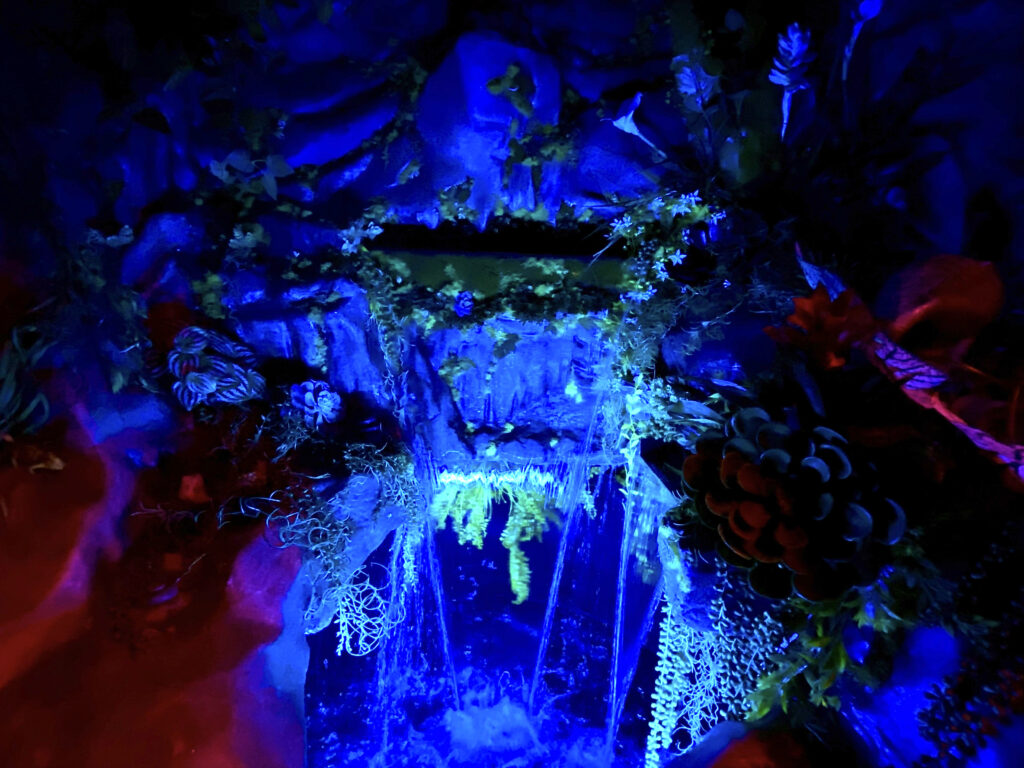
I really liked the look, feel and comfortable seating at the upstairs Nest Bar. But the lower cave bar is the star. When there, I thought of some parallels with other bars: the ceiling floats and panel carvings recall a little bit of False Idol; the projection lighting, similar to (but more intimate than) Zombie Village’s light displays, and the jungle cave walls have a little of the decorative feel of Last Rites. But the cave’s overall feeling is not quite like any other tiki or theme bar that I can recall.
In short: Amazing! (“Subarashii!”)
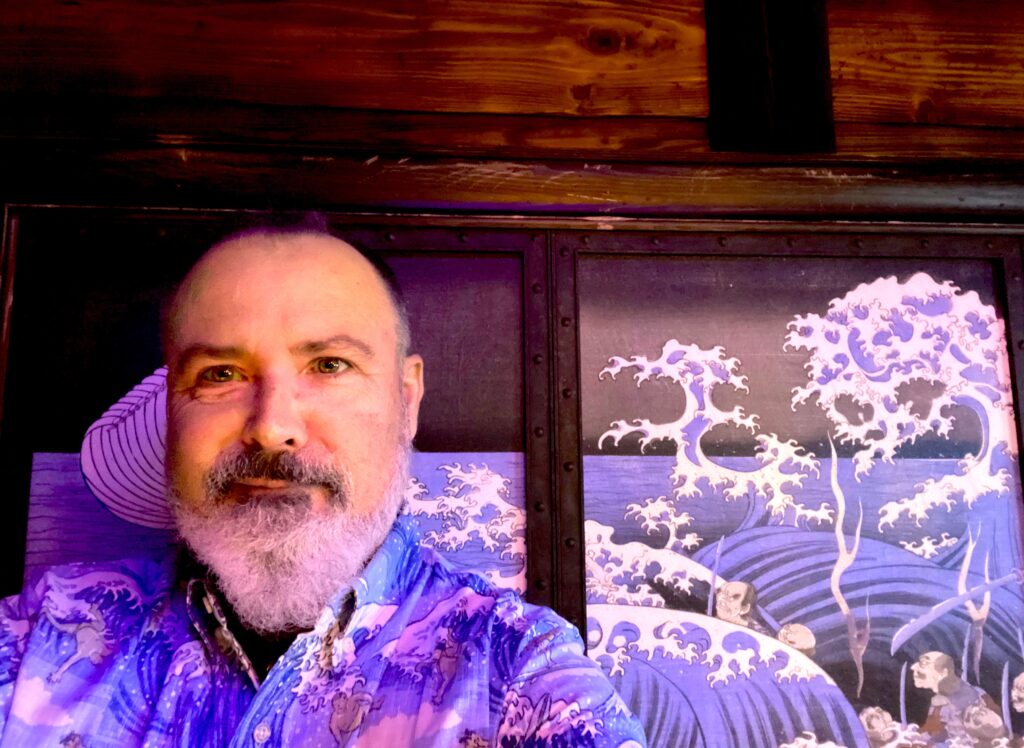
In part II of this review, drinks! In Part II, Stephen discusses his thoughts on a number of the bar’s cocktails along with insight from Tiki Tatsu-ya drink impresario Cory Starr.
Here is Tiki Tatsu-Ya’s Website
And Facebook Page
